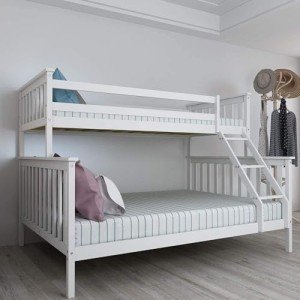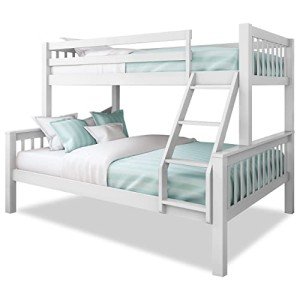In the realm of furniture, few items combine efficiency, space-saving capabilities, and a touch of whimsy as elegantly as 3-tier bunk beds. Ideal for large families, children's sleepovers, or even maximizing space in a small apartment, these beds serve multiple purposes while adding aesthetic value to a room. This guide delves into the features, benefits, and considerations of 3-tier bunk beds, providing readers with comprehensive insights into this distinctive sleep solution.
3 tier bunk beds are unique sleeping arrangements that typically consist of three twin-sized beds stacked one atop the other. This configuration maximizes vertical space, allowing multiple sleepers to share a room without sacrificing floor area for individual beds. The top, middle, and bottom bunks offer options for various sleeping preferences – the thrill of heights for adventurous children, the ease of access for those in lower bunks, and a charming visual element for any bedroom's interior design.

When considering a 3-tier bunk bed, several features stand out:
Choosing a 3-tier bunk bed can provide numerous advantages:
| Feature | Description | Benefits |
|---|---|---|
| Space Efficiency | Stacked beds instead of separate beds | Maximizes floor space |
| Safety | Guardrails on upper bunks | Reduces fall risk |
| Versatility | Optional storage or desk features | Multi-functional |
| Design Variety | Available in various styles and materials | Customization options |
While 3-tier bunk beds offer numerous benefits, certain factors should be evaluated before making a purchase:
To make an informed decision, consider the following tips:
Yes, 3-tier bunk beds are generally safe for children. However, it's essential to ensure that they are constructed per safety guidelines and equipped with guardrails on the upper levels. Parents should supervise young children to minimize risks associated with climbing and using the upper bunks.
Maintaining a 3-tier bunk bed involves regular checks for loose screws or fittings, cleaning the surfaces regularly to avoid dust buildup, and following the manufacturer's guidelines for care. It's also prudent to inspect the stability of the structure periodically.
Weight limits vary by manufacturer, but typically upper bunks can support around 200–250 pounds while lower bunks support slightly more due to less height and greater stability. Always check the specific weight limits outlined by the manufacturer for safety measures.
In many cases, 3-tier bunk beds can be disassembled and used as individual beds, but this depends on the model and design. Always check the manufacturer’s guidelines to determine if separating them is an option.

When purchasing, it's essential to review the warranty terms and return policies. Look for products with comprehensive warranties that cover defects and ample return periods in case the bed doesn’t meet expectations.
3-tier bunk beds provide practical and exciting solutions for shared living spaces. With their inherent flexibility, safety features, and diverse design options, these beds not only solve space issues but also serve as charming additions to any child's room. By carefully evaluating features, benefits, and considerations, families can make an informed decision that balances style and functionality in their home. As the demand for innovative space-saving furniture continues, the popularity of 3-tier bunk beds remains ever-growing, making them an ideal choice for modern households.
No Data Found!

